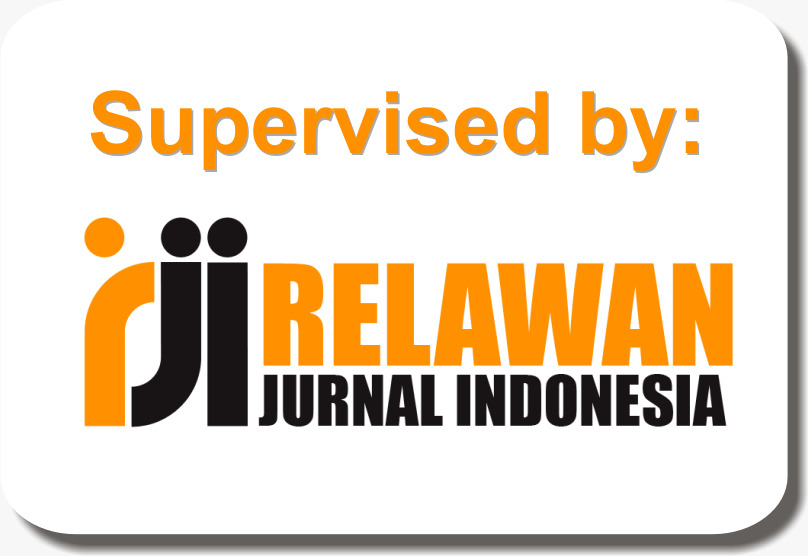COMPARATIVE ANALYSIS OF ANDROID-BASED ONLINE TRANSPORTATION APPLICATION SECURITY USING MOBILE SECURITY FRAMEWORK (MOBSF)
Abstract
Keywords
Full Text:
PDFArticle Metrics :
References
I. Himawan, K. Septianzah, and I. Setiadi, “Analisis Keamanan Informasi Malware Terhadap Aplikasi Apk Dengan Metode Static Analysis Menggunakan Mobsf,” JRKT (Jurnal Rekayasa Komputasi Ter., vol. 2, no. 02, pp. 122–127, 2022, doi: 10.30998/jrkt.v2i02.6734.
A. Apriliani, M. Budhiluhoer, A. Jamaludin, and K. Prihandani, “Systematic Literature Review Kepuasan Pelanggan terhadap Jasa Transportasi Online,” Systematics, vol. 2, no. 1, p. 12, 2020, doi: 10.35706/sys.v2i1.3530.
R. Renaldi and M. Pradana, “SEIKO : Journal of Management & Business Analisis Ekspektasi Penggunaan Aplikasi Transportasi Online Menggunakan Pendekatan Importance Performance Analysis (IPA),” SEIKO J. Manag. Bus., vol. 6, no. 1, pp. 887–897, 2023, doi: 10.37531/sejaman.v6i1.4114.
A. A. Putra, O. D. Nurhayati, and I. P. Windasari, “Perencanaan dan Implementasi Information Security Management System Menggunakan Framework ISO/IEC 20071,” J. Teknol. dan Sist. Komput., vol. 4, no. 1, p. 60, 2016, doi: 10.14710/jtsiskom.4.1.2016.60-66.
N. Anwar, S. A. Akbar, A. Azhari, and I. Suryanto, “Ekstraksi Logis Forensik Mobile pada Aplikasi E-Commerce Android,” Mob. Forensics, vol. 2, no. 1, pp. 1–10, 2020, doi: 10.12928/mf.v2i1.1791.
F. Awanda Alviansyah and E. Ramadhani, “Implementasi Dynamic Application Security Testing pada Aplikasi Berbasis Android,” Automata, vol. 2, no. 1, pp. 85–90, 2021.
C. Hanifurohman and D. D. Hutagalung, “Analisis Statis Menggunakan Mobile Security Framework Untuk Pengujian Keamanan Aplikasi Mobile E-Commerce Berbasis Android,” Sebatik, vol. 24, no. 1, pp. 22–28, 2020, doi: 10.46984/sebatik.v24i1.920.
F. Nurindahsari and B. Parga Zen, “Analisis Statik Keamanan Aplikasi Video Streaming Berbasis Android Menggunakan Mobile Security Framework (Mobsf),” Cyber Secur. dan Forensik Digit., vol. 4, no. 2, pp. 63–80, 2022, doi: 10.14421/csecurity.2021.4.2.3373.
M. H. Rumlus and H. Hartadi, “Kebijakan Penanggulangan Pencurian Data Pribadi dalam Media Elektronik,” J. HAM, vol. 11, no. 2, p. 285, 2020, doi: 10.30641/ham.2020.11.285-299.
P. Edward and A. N. S. Haprasari, “Analisi Kapabilitas SIPKD BKD Kota Salatiga,” Aiti, vol. 16, no. 1, pp. 65–87, 2019, doi: 10.24246/aiti.v16i1.65-87.
K. N. Afrina, M. Irwan, and P. Nasution, “Perlindungan Terhadap Penyalahgunaan Data Pribadi Dalam Layanan Transportasi Berbasis Online,” IJM Indones. J. Multidiscip., vol. 1, no. 2, pp. 834–840, 2023.
A. Kartono, A. Sularsa, and S. J. I. Ismail, “Membangun Sistem Pengujian Keamanan Aplikasi Android Menggunakan Mobsf,” eProceedings …, vol. 5, no. 1, pp. 146–151, 2019, [Online]. Available: https://openlibrarypublications.telkomuniversity.ac.id/index.php/appliedscience/article/view/8563%0Ahttps://openlibrarypublications.telkomuniversity.ac.id/index.php/appliedscience/article/viewFile/8563/8431
P. Studi, S. Informasi, F. Sains, D. A. N. Teknologi, U. Islam, and N. Syarif, “2023 m / 1444 h,” 2023.
C. Anwar, C. Herli Sumerli A, N. Rahayu, and K. Kraugusteeliana, “The Application of Mobile Security Framework (MOBSF) and Mobile Application Security Testing Guide to Ensure the Security in Mobile Commerce Applications,” J. Inf. Syst. Technol., vol. 5, no. 2, pp. 97–102, 2023, doi: 10.37034/jsisfotek.v5i1.231.
H. Shahriar, M. Arabin Talukder, and M. Saiful Islam, “An Exploratory Analysis of Mobile Security Tools,” KSU Conf. Cybersecurity Educ. Res. Pract., 2019, [Online]. Available: https://digitalcommons.kennesaw.edu/ccerphttps://digitalcommons.kennesaw.edu/ccerp/2019/research/4
D. Alqausar, “Tools Penetration Testing Android Terbaik untuk Mendeteksi Kerentanan Aplikasi Mobile,” Biztech.Proxsisgroup.Com. 2024. [Online]. Available: https://biztech.proxsisgroup.com/tools-penetration-testing-android-terbaik-untuk-mendeteksi-kerentanan-aplikasi-mobile/
F. Kurniawan, A. Kusyanti, and H. Nurwarsito, “Analisis dan Implementasi Algoritma SHA-1 dan SHA-3 pada Sistem Autentikasi Garuda Training Cost,” J. Pengemb. Teknol. Inf. dan Ilmu Komput., vol. 1, no. 9, pp. 803–812, 2017, [Online]. Available: http://j-ptiik.ub.ac.id/index.php/j-ptiik/article/view/247
R. M. Wahyudi, “Mengimplementasikan SSL/TLS pada Web Server Apache di dalam Jaringan Internal Praktikum untuk Pengembangan Web Server,” J. Majemuk, vol. 3, no. 1, pp. 13–31, 2024, [Online]. Available: https://jurnalilmiah.org/journal/index.php/majemuk/article/view/655
D. Prayama, Yuhefizar, and Amelia Yolanda, “Protokol HTTPS, Apakah Benar-benar Aman?,” J. Appl. Comput. Sci. Technol., vol. 2, no. 1, pp. 7–11, 2021, doi: 10.52158/jacost.v2i1.118.
S. Sinambela, A. R. Pangestu, and R. Feriyanto, “Analisis Aplikasi Malware pada Android dengan Metode Statik,” J. Ilm. Ilk. - Ilmu Komput. Inform., vol. 3, no. 2, pp. 88–94, 2020, doi: 10.47324/ilkominfo.v3i2.101.




